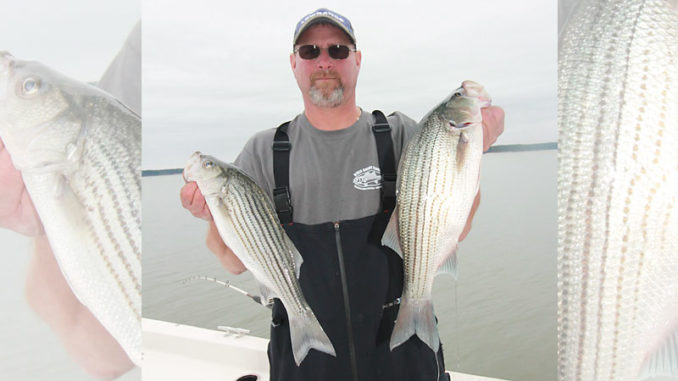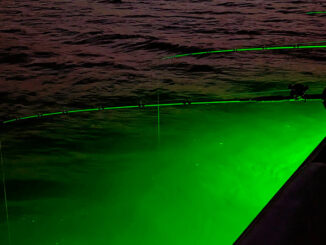
Stripers put on the feedbag as water cools off
September is the month that finally offers some relief from the long, hot summer. Whether advanced by seasonal tropical storms blowing up the coast, or just the normal slow decline in temperatures, water temperatures in big impoundments begin to decline. And that spurs a transition in the patterns of fish.
For striper and hybrid fishermen on South Carolina’s Clarks Hill Lake, that means two things: the bite is on most all day instead of primarily early and late. And the bigger fish will be roaming shallower water and chasing moving baits. That’s according to guide Allen Icenhour of Trenton, S.C., who has fished the lake since he was a teenager.
“In September, when things start cooling down and the water temperature starts back down, the bite should get even hotter than it is now,” Icenhour said in late July. That’s when the water temperature was hovering around 88 degrees and he was catching limits for his Dixie Guide Service clients most mornings. On some days they reached the limit by the time the sun had just begun its morning ascent.
Blueback herring is the bait of choice
“In September, we will still be fishing live blueback herring on down-rods. But chances are really good of catching a big hybrid or striper pulling planer boards in shallower water,” he said. “You should be pulling planer boards with one side shallow and the other side deep. You should have one side in 20 feet of water and the other in 30 feet.”
As for bait, according to Icenhour (803-480-9472), “fishermen always say the bigger the bait, the bigger the fish. But I have two 30-pound stripers on the wall that I caught pulling (small) blueback herring on planer boards.”
Planer boards and free-lines come more into play starting in September, because when the water temperature starts cooling down, fish are more likely to chase a moving bait, he said.
“I like to pull planer boards and free-lines once the water temperature gets down into the 55- to 75-degree range,” he said. “So by September, I will transition more to moving-bait action than just down-lines.”
The moving-bait action will produce largemouth bass, spotted bass and even catfish in addition to stripers and hybrids, he said. This kind of action lasts right on through the end of the year and into the following spring, he added.

